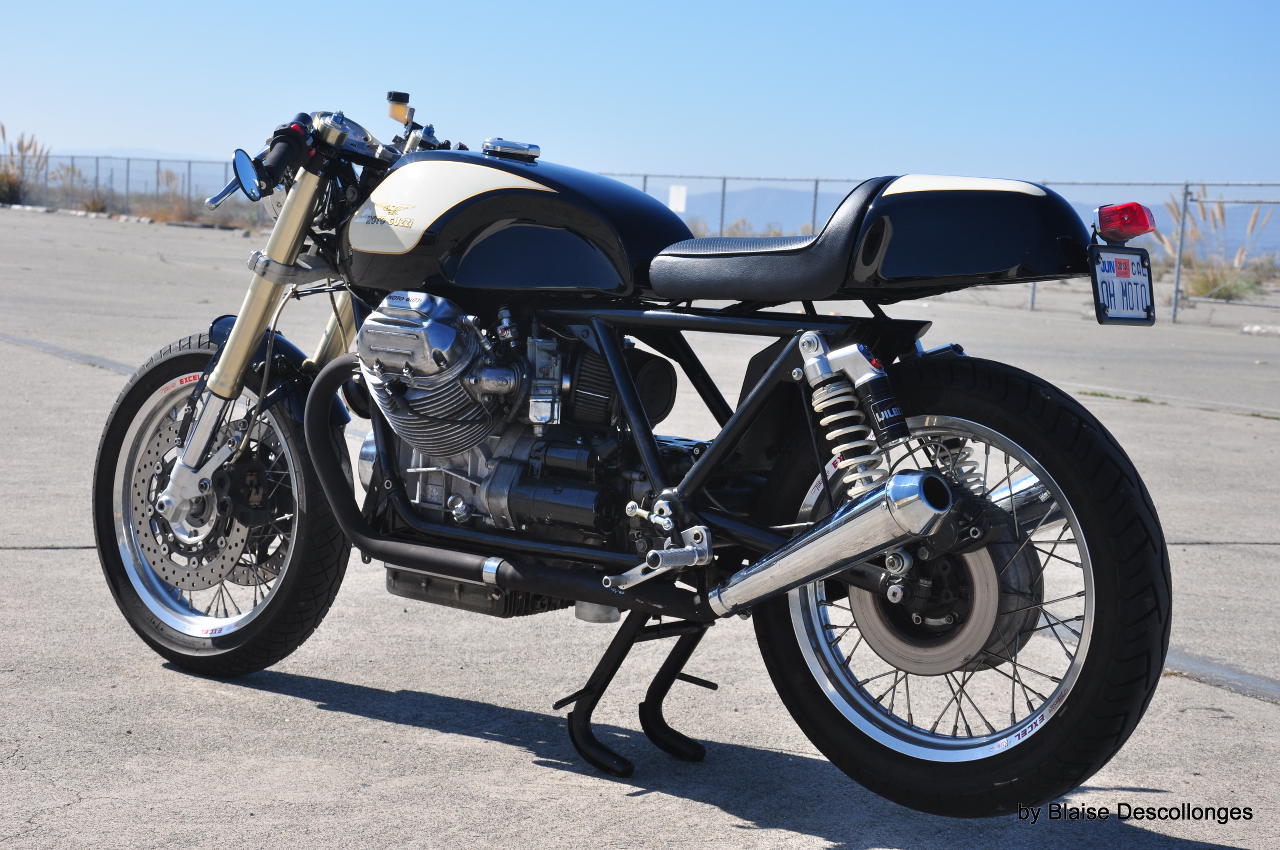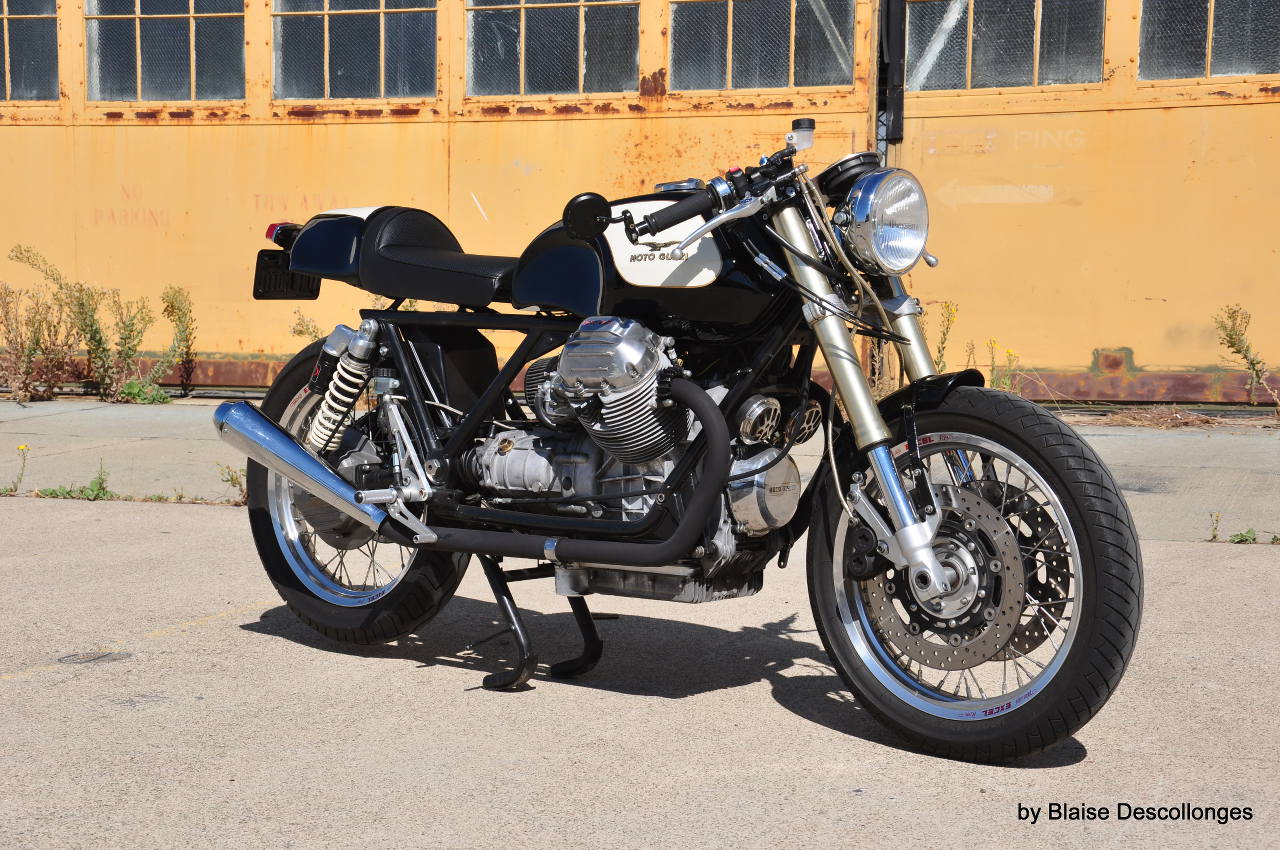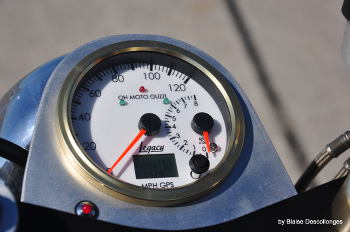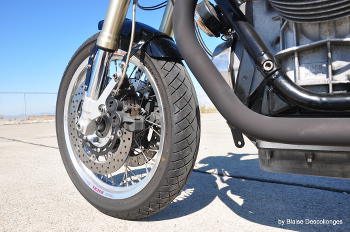The vintage bike world harbors two schools of thought. First, there’s the one for those interested in the historic and aesthetic value of old motorcycles. For them, nothing but 100 percent authenticity will do, from the mirror to the tires. If you don’t have an original owner’s manual and tools, your bike is nothing.
Then come the vintage bike riders. They know it’s hard to be satisfied with mid-20th-century power, tires, brakes, suspension and electrics. So the Sawzall, welding torch and aftermarket catalog are friends, not mortal enemies or tools for vandals and heretics.
I assume many MD readers fall into the second camp, and not because they tend to be more likely to spend their Sundays riding than trawling eBay for NOS sparkplug caps. The best riding roads are more bendy than straight, freeways are bumpy and packed with dangerously aggressive morons, and since your riding season may not be that long, you’ll want to spend as much time as you can in the saddle.
You may be sympathetic to the journey of S. F. Bay Area financier Olaf Hoff. When he turned 60, he decided to get back into motorcycling after a long absence. (How long? His last ride was a pre-Hinkley Triumph Bonneville, he said). “I said to my wife, ‘I’m missing a great opportunity,'” the imposingly tall, leather-clad Hoff told me, “‘I hope you don’t mind but I’m getting a motorcycle.’ But what to ride?”
He liked the look of classic Moto Guzzis, and settled on a ’70s 850 T3, which you may remember as a standard/tourer/cruiser/cop-o-cycle kind of thing with Italian flair. Think floorboards, a long bench saddle and a big clam-shaped fuel tank. “My intention was to have a cruiser, but as I rode it I started to realize what I wanted.” Olaf wanted footpegs, not floorboards, better handling, better brakes—as the shopping list mounted, he realized he should just leave the bike with his mechanic and have him fix everything at once.
The mechanic is Alameda, California photographer and bike builder Patrick Bell of GreyDog Moto. Patrick has been working on vintage BMWs and Guzzis for 25 years—when he started, 70s bikes weren’t really vintage, just cheap, dependable bikes you could ride daily—and he still has the BMW /5 he had when he was 17. With his friend John Koester, and Olaf’s blessing, he started to remake the T3 as a cafe racer—the best way to get Olaf everything he wanted. If that wasn’t sufficiently challenging, producers from the cable TV show Cafe Racer contacted him: “Can you do it in a month?”
Can’t say no to that, Bell decided. To meet Olaf’s goals, Patrick ditched a lot of the ’70s engineering that he seems to hate—he calls it “that old, junky Italian stuff”—and replaced it with modern components. An early Yamaha YZF-R1 sportbike donated forks and brakes (allowing Patrick to bin the despised linked braking system); Wilbers Suspension in Germany hastily built a set of rear shocks; Buchanan’s Spoke and Rim expedited a set of Excel wheels, a 17-inch front and an 18-inch rear. Those old plastic-encased instruments were tossed in favor of a modern (but classic-looking) Legacy GPS speedometer/tachometer that eliminates the need for a speedometer or tach cable.
Deciding what you want on a cafe-racer project is easy. Making it all work is harder. Using Google SketchUp, a collaborative 3-D imaging program, Patrick sent John rough ideas of the machined spacers and other bits he needed to graft the R1 front end and brakes to the original Guzzi hub. Despite the pressures of running his photography business, dealing with over 15 suppliers and a three-year-old son running wild, the bike was finished for the show and filmed getting a 114-mph shakedown run at the old Alameda Naval Air Station. “Once I got everything together,” Patrick told me, “it bolted together easily—it worked!”
The finished bike looks lovely. The fuel tank is the original T3 6.6-gallon cell, remade by painter/craftsman Tony Parker. He concaved the front to clear the clip-ons, cut and stretched the back 10 inches, then lovingly applied the lush two-tone retro paint job, reminiscent of the early-’70s Ambassador. The elegant oval valve covers have the Moto Guzzi logo depicted in red, highlighting the distinctive hulking lump of the 90-degree V-Twin. Behind the motor is space created by mounting the battery and other electrics under the Ducati 900 Supersport seat hump. The clean aluminum of the rims matches the uncluttered execution of the rearsets—which use custom laser-cut billet parts and off-the-shelf Woodcraft components—and modern shapes of the rear shocks and front end.
A real critic of this genre may fault the way the seat hovers, seemingly by magic, over the low, straight Tonti frame. This is by design—the seat unit rests on adjustable tubing, elevated sharply because of Olaf’s six-foot-four-inch height, ill-suited to an Italian bike of this era. A more critical builder might have spent more time on this problem, but Patrick cut his tuning teeth at legendary race shop Performance and Design (where he met John), where he was steeped in the club-racer “get-er-done” ethos.
I didn’t get to ride the bike, but I would wager it handles and brakes a lot better than a ’70s Guzzi—not exactly a high bar, true. Still, the Wilbers shocks are the most sophisticated twin boingers I’ve ever seen, beautifully made and adjustable for preload, compression and rebound damping. The R1 front end gives multiple adjustments, and since Patrick lopped 60 or 70 pounds off the T3, it’s probably sprung about right. The four-piston monobloc brakes and giant floating rotors probably make the Guzzi stop hard enough to make it spit out its dentures. All the changes seemed logical, but purists may claim that Guzzi’s engineers probably had reasons for their choices. John Koester disagrees: “The nice thing is they often didn’t do things for a good reason, so you have a 50-50 chance of your modification being better.”
Any racer knows that a great chassis and handling can make up for a lack of power, and all parties concerned agreed the 50 or 60 horsepower the T3 sends to the rear Battleaxe is enough. Big-block Guzzis are famous for monster torque and tall gearing, making them feel far stronger than they are. So they retained the motor’s original state of tune, with the stock 30mm Del’Orto carbs and some nice-looking EMGO mufflers (too noisy: Patrick built baffles to quiet them). A Dyna ignition keeps things reliable—don’t forget these bikes originally used Lucas (“Prince of Darkness”) electrics.
Olaf, Patrick and John’s creation is neat, minimal, well-built and classy. Olaf reports it’s a joy … with all the power he needs for some of the country’s best roads on the bike of his dreams.











If I was going to build a bike like this, with no regard for original equipment, I’d have fit it with the latest Guzzi engine. The new one is much mo betta.
Some day I’m going to do a build like this. A seventies Guzzi (or BMW) makes a great basis for a cafe racer. Different people would do this or that differently but this is a gorgeous bike. To me the tank is a piece of art.
I do have to wonder about the guy who is so afraid of carburetors. I prefer FI (I hate getting that gas smell on my hands) but a set of modern carbs is not that big a deal. Get them right and it will be years before you need to touch them again.
Anyway, great job.
Goose
So what does something like this cost?
It may be pretty, but I don’t see it rideable without a battery.
BR — See ¶ 9:
” . . .Behind the motor is space created by mounting the battery and other electrics under the Ducati 900 Supersport seat hump. . .”
I think its a nice execution hiding the battery in that space :^)
Call me old fashioned, but this is what a motorcycle ought to look like. The clean functional classic lines with everything exposed not only looks great but is accessible. It will not perform like a modern bike but the riding experience will be enjoyable in a completely different way.
I know it’s a motorcycle, not a stereo, but Guzzis and Ducatis have the most soul stirring sound. That’s why I STILL, after all these years want a Guzzi. Next winter, it’s gotta happen. Gotta finish a Suzuki SV first.
re: “I know it’s a motorcycle, not a stereo”
oh but it IS a stereo… 🙂
I don’t like the brake light, it could have been more well thought out — looks like I’d knock it sideways with a clumsy boot. +1 on the prior comments questioning the chrome silencers with the blacked out pipes, but this is a beautiful bike that looks like a ball to ride. I’m a shorty 5’7″, so I feel a little bad for the big man that has to have the articulating seat mount to ride it, which doesn’t really offset the envy I feel that he owns it and I don’t :)thanks for sharing!
Sweet, bare and to the point. If I owned that scoot, I would keep it exactly as shown for config 1 (weekends). Config 2 would be a set of Flanders C20 bars and a custom set of panniers just large enough for my laptop bag on one side and my lunch on the right (work commute).
daddy likes
The way the seat fits on the rails makes it look like someone’s unfinished project. Why can’t the builder see that?
Me likee!
Nice. Reminds me of the black and tan ducati gt1000.
“Chrome the head pipes”. Only if you have them ceramically coated inside and out so they don’t turn blue and other ugly colors. Otherwise I say keep them black.
Lovely piece of work.
Chrome the head pipes and you have a big winner….never owned one but for some reason I like Guzzi’s.
I like the wheels.
Like it.
My geography is 6k feet elevation, 62″ annual white powder. After owning a few bikes with FI I’d never, repeat, never, prefer to see a carburetor again as long as I live.
These mods are nice, but I’d start with a modern injected Guzzi, even the little 750.
“Lucas electrics?!?” No Guzzi had Lucas electrics. Magneti Marelli and Bosch, yes.
Aesthetically it catches my eye, but then I own and admire Guzzis. The only spot that doesn’t quite stoke me is the combo of black pipes and chrome muffler. To me it makes the muffler look more tacked on and less of the whole. Either keep it all shiny or not. But hey that’s me, let’s ride!
Now THAT’S a pretty Guzzi !